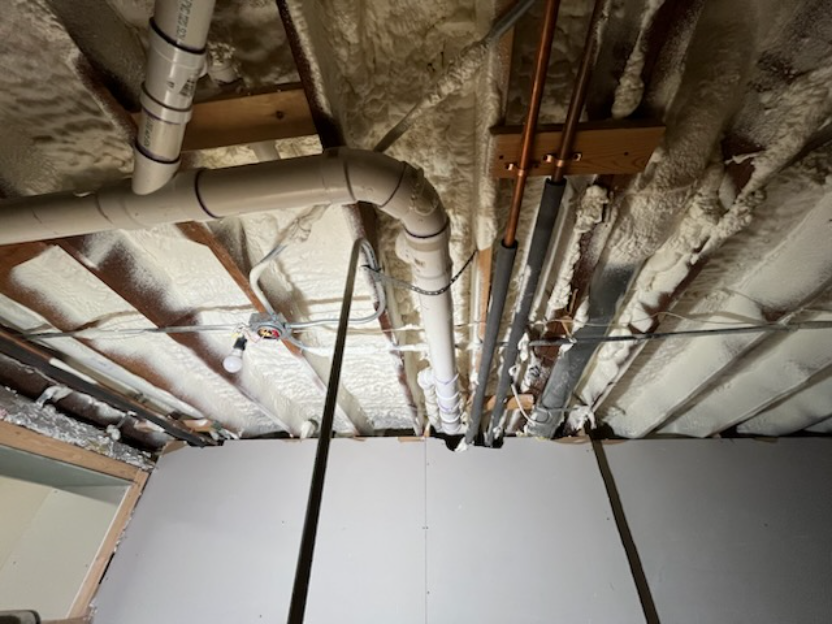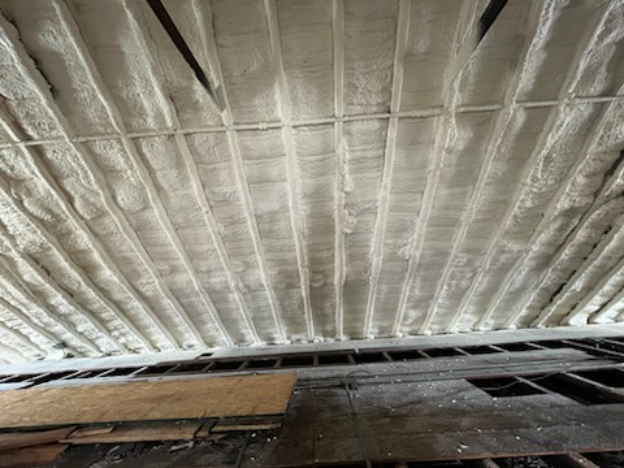
Old or contaminated insulation in homes often hides serious health threats, especially in areas like Beverly, Chicago, where harsh winters and humidity create ideal conditions for problems to develop. The main risks come from materials like asbestos, which can cause lung diseases, and mold growth due to moisture, leading to respiratory issues. Fiberglass particles also irritate skin and eyes when disturbed. These dangers stem from insulation installed decades ago that breaks down over time, releasing harmful fibers or allowing contaminants to thrive. Immediate steps involve professional inspection to identify and remove such materials safely.
To address these concerns, this article breaks down these risks, explains local factors in Beverly, and offers practical guidance to help residents protect their health. Information draws from years of hands-on work with Chicago-area homes, where teams have assessed and addressed insulation issues firsthand to prevent exposure.
Many homes in Beverly built before the 1980s contain insulation with asbestos, a fibrous mineral once common in attics and walls. When disturbed during renovations, these tiny fibers become airborne and lodge in lungs, causing conditions like asbestosis or mesothelioma over years of exposure. Vermiculite insulation, popular in the mid-20th century, sometimes carries asbestos contamination from mining sources.
Another concern involves cellulose insulation treated with chemicals that degrade, releasing irritants. In damp Chicago basements, this material absorbs water and fosters mold colonies. Fiberglass, while less toxic, sheds sharp glass-like particles that inflame airways and skin on contact.
Bonus Tip: You should check for bulging or discolored spots in attics, as these often signal contamination before odors appear. This can help spot issues related to fiberglass or early mold growth.
Respiratory troubles top the list of issues from old insulation. Asbestos fibers scar lung tissue, leading to shortness of breath and chronic cough. A report from the Environmental Protection Agency (EPA) details how even low-level exposure raises cancer risks, with symptoms appearing 10 to 50 years later.
Mold spores trigger allergies, asthma attacks, and infections in sensitive individuals. In humid environments, black mold like Stachybotrys produces mycotoxins that cause headaches, fatigue, and nasal congestion. The Centers for Disease Control and Prevention (CDC) notes that children and elderly residents face higher chances of severe reactions.
Skin and eye irritation from fiberglass leads to rashes, itching, and redness, especially for those handling it without protection. Long-term, repeated exposure may sensitize the immune system, worsening reactions over time.
Data from the American Lung Association shows indoor air pollutants, including insulation fibers, contribute to 4.6 million asthma cases annually in the U.S., with urban areas like Chicago seeing elevated rates due to older housing stock.
In Beverly, these risks are heightened by local factors. Beverly’s location on Chicago’s South Side exposes homes to extreme weather swings. Freezing winters cause pipes to leak, trapping moisture in walls and promoting mold in insulation. Summer humidity, often above 70%, exacerbates this, as attics trap warm, damp air.
Local building practices from the 1950s to 1970s frequently used asbestos-laden materials without modern safeguards. Chicago’s clay-heavy soil leads to foundation cracks, allowing water intrusion that contaminates insulation. Residents report higher allergy seasons here, tied partly to poor indoor air from aging homes.
A study by the City of Chicago Department of Public Health highlights that 40% of South Side structures predate 1960, increasing exposure risks compared to newer suburbs.
Bonus Tip: During Chicago’s wet springs, you should run dehumidifiers in basements to cut moisture levels below 50%, reducing mold chances in nearby insulation.
To highlight differences, consider this table outlining key types, their health threats, and prevalence in older Chicago homes.
| Insulation Type | Primary Health Risk | Exposure Method | Prevalence in Pre-1980 Homes |
|---|---|---|---|
| Asbestos | Lung cancer, asbestosis | Airborne fibers from disturbance | High (attics, pipes) |
| Vermiculite | Similar to asbestos if contaminated | Inhalation during handling | Medium (loose-fill attics) |
| Cellulose | Mold-related allergies, chemical irritants | Spore inhalation, skin contact | High (walls, attics) |
| Fiberglass | Respiratory irritation, skin rashes | Particle inhalation, direct contact | Very high (batts in walls) |
This breakdown helps identify potential issues during home checks.
Building on the health concerns outlined earlier, nationwide data provides further evidence of these risks. The EPA estimates 10,000 to 15,000 lung cancer deaths yearly from past asbestos exposure, with many linked to home insulation. In Illinois, state health records show over 500 mesothelioma diagnoses since 1995, often traced to residential sources.
Chicago-specific data from the Illinois Department of Public Health indicates that 25% of tested older homes have asbestos-containing materials, underscoring the need for vigilance in neighborhoods like Beverly.
Mold complaints in Chicago rose 30% from 2010 to 2020, per local environmental reports, driven by climate patterns and aging infrastructure.

Assess the home’s age first; structures over 40 years old warrant a full insulation survey. Factor in family health history, especially if anyone has asthma or allergies, as removal could stir up contaminants temporarily.
Budget for professional testing, which costs $300 to $800 but prevents costlier health bills later. Check local regulations; Chicago requires certified abatement for asbestos to avoid fines up to $25,000.
Weigh energy efficiency gains from replacement against short-term disruption. Consider seasonal timing: Schedule inspections in dry months to minimize moisture complications during work.
Bonus Tip: You should document all findings with photos and reports for insurance claims if health issues arise post-exposure.
DIY removal is not recommended, especially when hazardous materials may be present. Improper handling can spread fibers and worsen contamination. Professionals use sealed systems to safely contain and remove risks.
Persistent musty odors, unexplained allergy symptoms, or visible dust blowing from vents often signal deeper insulation problems that require inspection.
Effects vary by material. Irritation from fiberglass shows up right away, while asbestos-related diseases may take decades. Mold symptoms like coughing can start within days of heavy exposure in damp homes.
Yes, undisclosed hazards lower appeal to buyers. Disclosing and remediating boosts value by up to 10%, based on real estate trends in Chicago’s South Side.
Wear gloves, goggles, and N95 masks. Avoid direct contact and ventilate areas well to keep particles from spreading.
No, it can grow hidden behind walls. Air quality tests detect spores even without obvious signs, especially in humid Chicago basements.
Test during home sales, renovations, or if health symptoms persist without clear causes. Annual checks help in older properties prone to water damage.
Old insulation in Beverly homes carries real dangers from asbestos, mold, and irritants that harm lungs, skin, and overall health. Local weather amplifies these through moisture buildup. Inspect promptly, use certified pros for removal, and monitor indoor air to stay safe. Evaluate your home’s setup, family needs, and budget to decide on next actions that fit long-term well-being.
Contact South Chicago Insulation at (779) 803-8025 or email [email protected] for a consultation on assessing insulation risks. Schedule an inspection to identify issues early and ensure safe handling. This step protects health without unnecessary delays. (68 words)